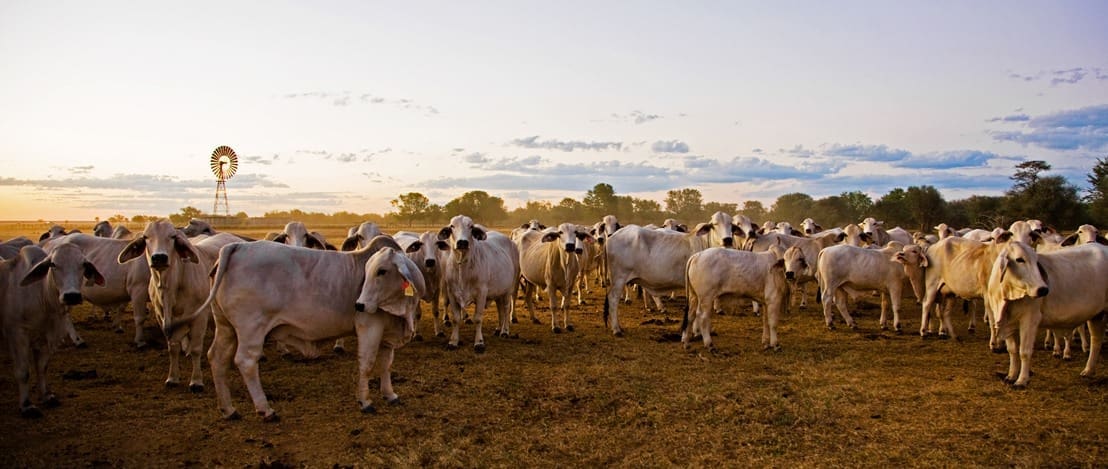
THE development of multi-trait Single-Step Genomic BreedPlan (ssGBLUP) evaluation, which combines pedigree, performance, and genomic information into a single genetic analysis, marked a new era for cattle breeding.
For the Australian Brahman Breeders’ Association, this approach was first implemented in April 2017, making Brahmans one of the first breeds in the world to adopt and embrace the genomic era.
Seven years on, as presented at the AAABG Conference in New Zealand, the changes, opportunities, and emerging considerations were explored in a paper by Catriona Millen, Brad Crook and Paul Williams.
Their paper, Seven Years On: What Has Single-Step BreedPlan Meant for the Australian Brahman Breed?, highlighted the substantial growth in the number of animals included in the Genomic Relationship Matrix (GRM).
By the end of 2024, more than 78,000 animals had been genotyped, a seven-fold increase from the 10,867 recorded in early 2018.
A notable strength of the Brahman experience has been the strong inclusion of female animals in the genomic dataset. In 2024, females represented 49 percent of genotyped animals, a significant contrast to breeds like Hereford, where early GRMs were dominated by males, and only 16pc of animals were female.
This broader genomic base was made possible by large-scale, industry-funded initiatives such as the Brahman Beef Information Nucleus and Repronomics programs. These projects contributed thousands of intensively recorded and genotyped animals, particularly females, for economically relevant traits like fertility and reproduction.
Effect of genomics on the accuracy of EBVs
One of the key findings from the authors, Millen and others, was the effect of genomics on the accuracy of Estimated Breeding Values. For young animals with initially low EBV accuracy (around 30pc), the inclusion of SNP genotype data resulted in substantial accuracy improvements, up to 37pc for growth traits such as 200 and 400-day weight.
Fertility traits, including days to calving and scrotal size also showed notable improvement. However, as expected, traits with lower heritability, such as retail beef yield or shear force (an indirect measurement of meat tenderness), showed more modest gains.
These results demonstrate the tangible value that genomic tools can bring to selection decisions. However, the benefits are strongest when supported by a robust and diverse reference population with high-quality phenotypic data.
Concerning trend
While the uptake of genotyping is commendable, a concerning trend has emerged.
In 2018, just 14pc of genotyped animals lacked phenotypic records. By 2024, that figure had jumped to 49pc. This indicates that while many Brahman breeders have embraced genotyping, fewer are collecting the corresponding performance data that underpins long-term evaluation accuracy.
This issue is also visible in commercial bull sales. At the 2016 Rockhampton Brahman Week Sale, fewer than 20pc of sale lots had BreedPlan EBVs. By 2024, more than 90pc were presented with EBVs.
However, more than 80pc of those 2024 sale animals had genomic data, but no phenotypic records. This increase in EBV visibility is valuable for buyers, but the over-reliance on genotyping alone risks weakening the evaluation’s foundation.
No shortcuts
While genomics offers major advantages, particularly for early selection, it should not be mistaken for a shortcut.
Genotyping is not a replacement for data collection. The strength of Single-Step BreedPlan lies in its ability to combine genotypes with actual performance records to produce accurate, meaningful EBVs.
As Millen et al. emphasise, the long-term value of the system depends on maintaining a representative and high-quality reference population. Without continued investment in recording – particularly for traits like fertility and carcase merit – the system becomes more vulnerable to drift and reduced prediction accuracy.
The lesson from seven years of genomic progress in the Brahman breed is clear: the industry must continue investing in performance recording and structured data capture.
These efforts, supported by targeted extension and strategic projects, are essential to sustaining progress. While genomics may offer a faster rate of progress, reliable, performance data ensures we stay on track.

Alastair Rayner
Alastair Rayner is Principal of RaynerAg and an Extension & Engagement Consultant with the Agricultural Business Research Institute (ABRI). He has over 28 years’ experience advising beef producers and graziers across Australia. Alastair can be contacted here or through his website: www.raynerag.com.au

HAVE YOUR SAY